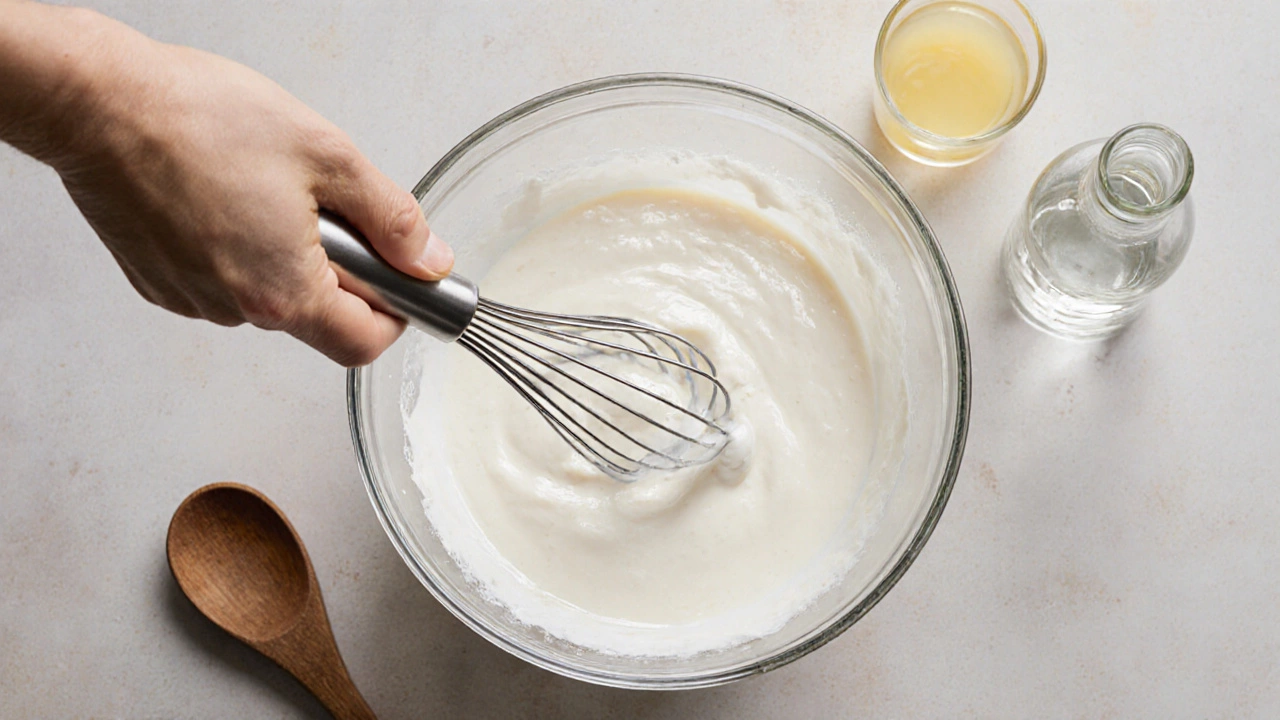
Key Ingredients for Perfect Pavlova - What You Need to Know
Discover the essential ingredients for a perfect pavlova, why each matters, and tips to achieve a crisp, airy meringue topped with fresh fruit and cream.
When working with Meringue, a light, airy dessert topping made from whipped egg whites and sugar. Also known as meringue frosting, it creates crisp shells or soft clouds for pies, cookies, and layered desserts. If you’re after meringue basics, you’ve landed in the right spot. The first thing to master is the stiff peaks, the stage where egg whites hold firm, upright points when the whisk is lifted. Hitting this stage tells you the foam is stable enough for most recipes, but the journey doesn’t stop there.
There are three main families of meringue, each with its own trick. French meringue, the classic version that simply whips egg whites and sugar together is the lightest, but it’s also the most vulnerable to humidity. Swiss meringue, a method where sugar and egg whites are gently heated over a bain‑marie before whipping produces a silkier texture and is less prone to weeping. Italian meringue, the strongest type that incorporates a hot sugar syrup into already whipped egg whites creates a glossy, stable frosting perfect for buttercream hybrids or flambé desserts. Knowing which one to pick sets the stage for success.
Once you’ve chosen a method, you’ll discover meringue in a surprisingly wide range of treats. A classic lemon pie often finishes with a baked French meringue that turns golden under the broiler. Pavlova lovers rely on Swiss meringue to hold a crisp shell while staying soft inside. Baked Alaska, that show‑stopper of ice cream and cake, leans on Italian meringue because the hot oven can brown the exterior without melting the frozen core. Even macarons, those delicate sandwich cookies, begin with a French‑style meringue to achieve the coveted “foot” and smooth tops. The common thread? All these recipes depend on the same basic principles—proper egg‑white preparation, correct sugar ratio, and the right peak stage.
Troubleshooting is where most beginners stumble, so here are the go‑to fixes. First, always use a clean, grease‑free bowl; any fat will stop the whites from whipping. Second, measure sugar by weight for consistency—most failures come from too much or too little. If you see an oily sheen, the sugar hasn’t dissolved; keep whisking a bit longer or warm the mixture gently (Swiss method). Over‑whipping is another pitfall: the foam will become grainy and start to separate. The rule of thumb is to stop when the peaks stand firm but the texture still looks glossy. Lastly, humidity can make meringue weep; if you live in a damp climate, store finished pieces in a low‑humidity area and consider using a dry‑heat oven for the final bake.
With these fundamentals in your toolbox, you’re ready to tackle the articles below. They dive deeper into specific techniques, share pro tips for each meringue type, and answer the everyday questions that pop up when you’re whisking away in the kitchen. Happy folding!

Discover the essential ingredients for a perfect pavlova, why each matters, and tips to achieve a crisp, airy meringue topped with fresh fruit and cream.

Learn the key differences between meringue and pavlova, from ingredients and texture to baking methods and serving ideas, plus tips, recipes, and FAQs.